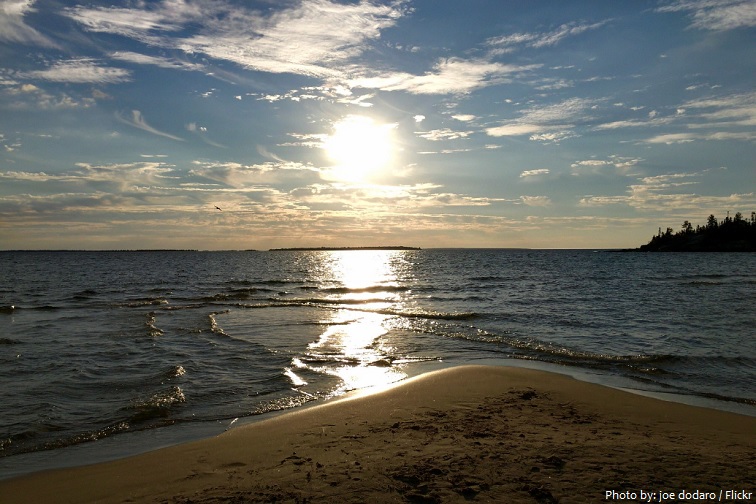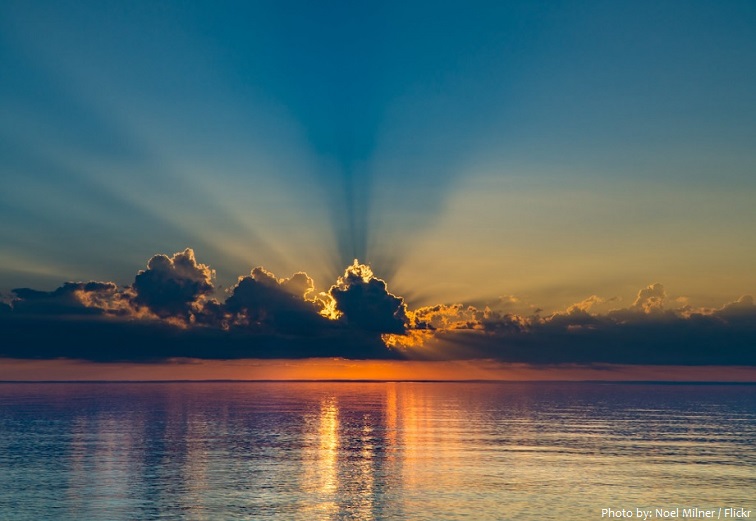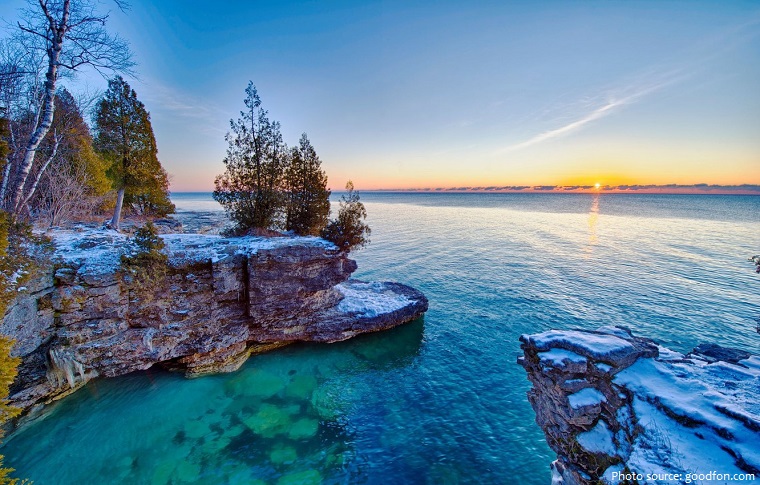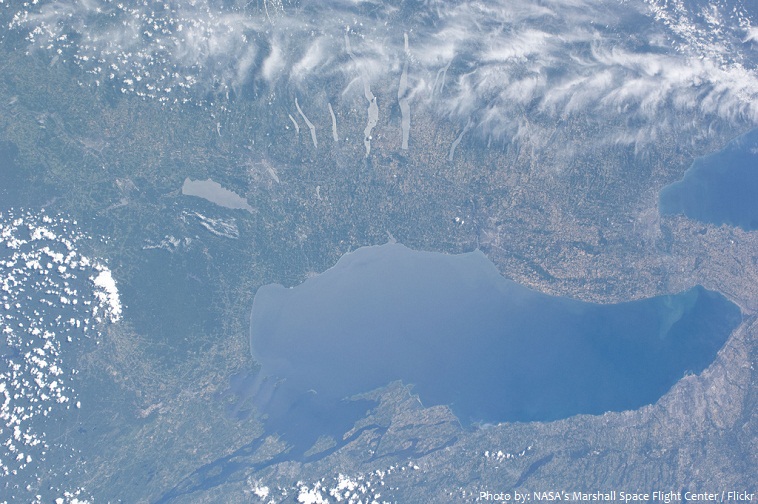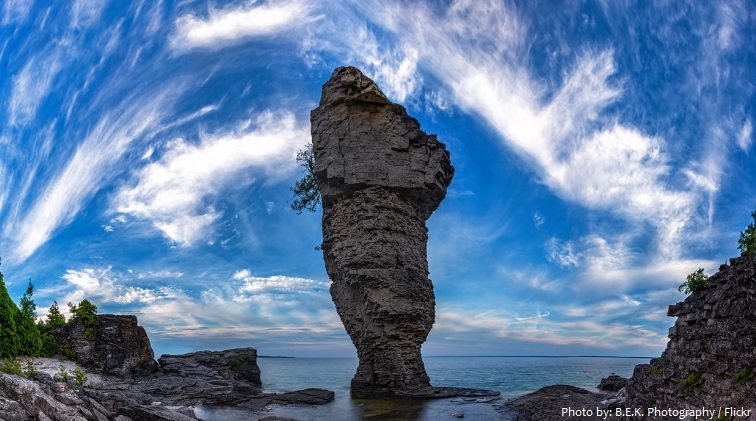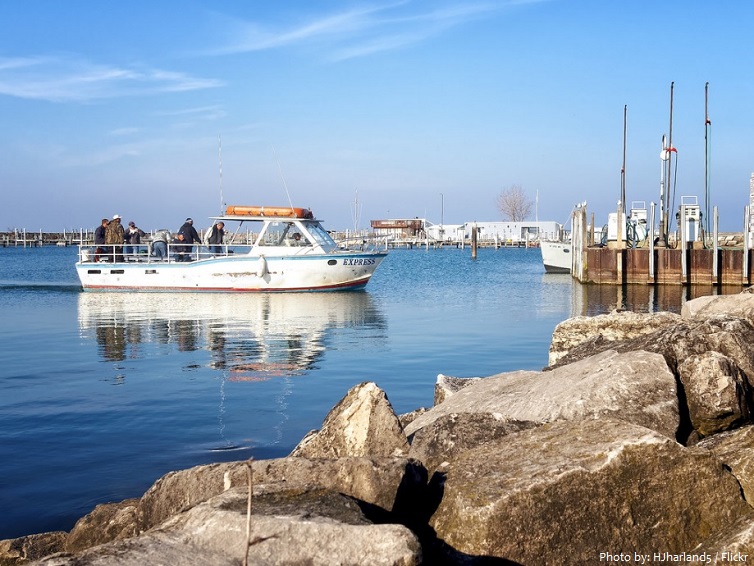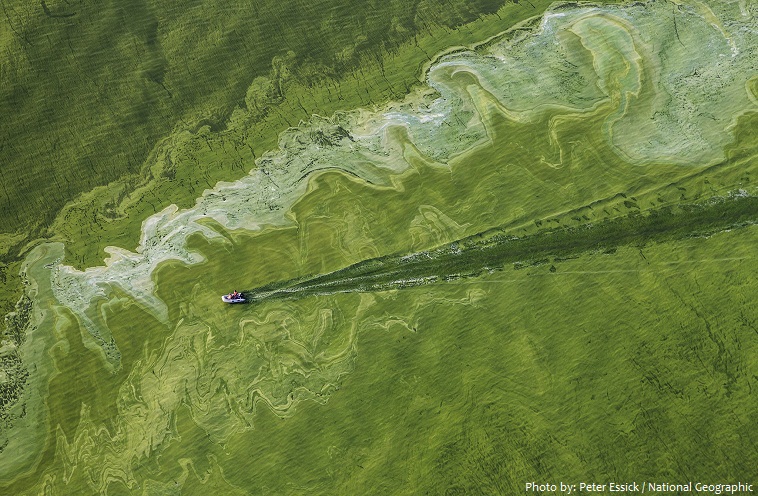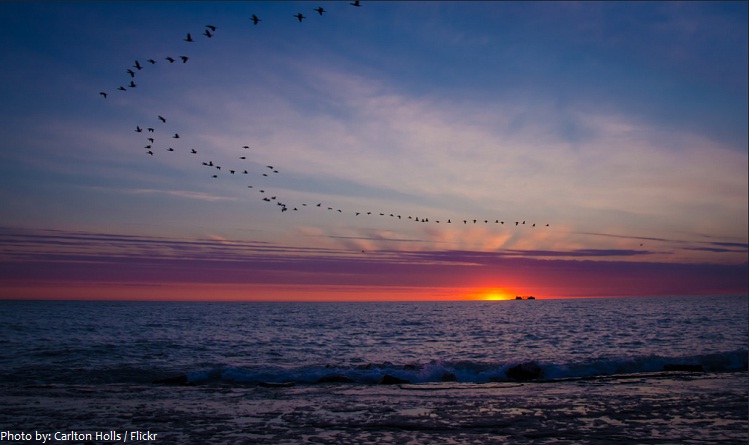The Great Lakes are five large lakes in east-central North America.
They hold 21% of the world’s surface fresh water.
They are lakes Superior, Michigan, Huron, Erie, and Ontario.
Hydrologically, there are only four lakes, because lakes Michigan and Huron join at the Straits of Mackinac.
Due to their sea-like characteristics (rolling waves, sustained winds, strong currents, great depths, and distant horizons) the five Great Lakes have also long been referred to as inland seas.
The total surface is 244,100 square kilometers (94,250 square miles), and the total volume is about 22,671 cubic kilometers (5,439 cubic miles), slightly less than the volume of Lake Baikal (23,615 cubic kilometers or 5,666 cubic kilometers), 22–23% of the world’s surface fresh water).
Lake Superior is the second-largest lake in the world by area, and the largest freshwater lake by surface area. The surface area of Lake Superior is 82,170 square kilometers (31,700 square miles). That is 10% of all the Earth‘s fresh surface water.
Lake Superior is the world’s third-largest freshwater lake by volume (Lake Baikal in Siberia and Lake Tanganyika in East Africa contain more water) and the largest by volume in North America.
Lake Huron is the second-largest of the Great Lakes by surface area, with a surface area of 59,588 square kilometers (23,007 square miles) — making it the third-largest fresh water lake on Earth and the fourth-largest lake.
Lake Huron has the largest shoreline length of any of the Great Lakes. The shoreline is 6,157 kilometers (3,827 miles), taking into account its 30,000 islands.
Lake Michigan is the third-largest Great Lake by surface area and the sixth largest freshwater lake in the world. It has a surface area of 58,026 square kilometers (22,404 square miles). Lake Michigan is the second-largest of the Great Lakes by volume (4,920 cubic kilometers / 1,180 cubic miles).
Lake Michigan is the largest lake that is entirely within one country.
Lake Erie is the fourth-largest of the Great Lakes by surface area, with a surface area of 25,667 square kilometers (9,910 square miles). It is the 11th largest lake in the world if measured in terms of surface area.
Lake Ontario is the smallest of all the Great Lakes in surface area with a surface area of 18,960 square kilometers (7,340 square miles). It is the 14th largest lake in the world if measured in terms of surface area.
The last in the Great Lakes chain, Lake Ontario serves as the outlet to the Atlantic Ocean via the St. Lawrence River.
Ice glaciers melting at the end of the latest Ice Age (about 10,000 years ago) were responsible for the formation of all of the other Great Lakes. They are one of the Earth’s youngest major features – by comparison, the Earth’s largest lake by volume, Lake Baikal in Russia, is 25 million years old.
With over 111,000 hectares (275,000 acres) of sand dunes lining the shores of Lake Michigan, Michigan is home to the largest freshwater dune system in the world.
The Bruce Peninsula, which divides Georgian Bay from the rest of Lake Huron, is home to Flowerpot Island, famous for its “flowerpot” or “sea stack” rock formations–unusual pillars of limestone shaped by years of erosion by wind, rain and lake spray.
Lake Huron was the first of the Great Lakes to be explored by the Europeans in the 1600s. The French explorers Samuel de Champlain and Étienne Brûlé reached Georgian Bay in 1615.
Goderich Mine is the largest underground salt mine in the world. Part of it runs underneath Lake Huron, more than 500 meters (1,640 feet) underground.
Lake Erie is home to one of the largest commercial freshwater fisheries in the world. Lake Erie’s great fishery supports 10,000 jobs per year and boost the economies by over $1 billion annually.
Lake Erie Mirage Effect. There have been sporadic reports of people in Cleveland being able to see the Canadian shoreline as if it were immediately offshore, even though Canada is 80 kilometers (50 miles) from Cleveland. It has been speculated that this is a weather-related phenomenon, working on similar principles to a mirage.
Toxic and harmful algal bloom occurrences in Lake Erie pose risks to drinking supplies, quality of life and economic vitality.
Lake Superior has been described as “the most oligotrophic lake in the world.”
Waves of over 12 meters (40 feet) in height have been recorded on Lake Superior.
The Petoskey stone, Michigan’s state stone, is composed of a fossilized coral, and the only place in the world it is found is on Lake Michigan beaches in northern Michigan.
Lake Superior’s name comes from the French word lac supérieur, which means “upper lake.” It called this because it is north of Lake Huron, which was discovered first by Brûlé.
Lake Huron was originally called La Mer Douce, or “the freshwater sea,” by French explorers. It later got its name from the Huron people who lived along its shores.
In the Wyandot (Huron) language, ontarío means “Lake of Shining Waters”.
Ontario, Canada’s most populous province, was named after the lake, and not vice versa.
The word “Michigan” was originally used to refer to the lake itself, and is believed to come from the Ojibwa Indian word mishigami, meaning “great water.”
Lake Erie was named by the Erie people, a Native American people who lived along its southern shore. The tribal name “erie” is a shortened form of the Iroquoian word erielhonan, meaning long tail.
Babe Ruth hit his first major league home run at Hanlan’s Point Stadium in Toronto. It landed in Lake Ontario and is believed to still be there.
A lake on Saturn’s moon Titan is named after Lake Ontario. It’s called “Ontario Lacus.”

